2020-2021 G3 ZED 12
Release Value Range: 5-12
Available Brake Widths: 85, 100, 115, 130 mm
Available Crampon Widths: 85, 95, 105, 115, 130 mm
Climbing Aids: Flat, 36, 55 mm
Forward Elastic Travel: 10 mm
Mounting Pattern Width: 39 mm (toe); 36 mm (heel)
Heel Mounting Gap: 0 mm
BSL Adjustment: 30 mm
Stated Weight: 345 grams (no leash / brake)
Blister’s measured weight:
- Toe: 124.7 & 124.7 g
- Heel: 239.7 & 239.2 g (without brakes, with stomp pad)
- Leashes: 18.0 & 18.3 g
- Brakes (100 mm): 87.5 & 87.4 g
- Screws: 12.4 & 12.4 g
- Total: 375.0 & 376.5 g (with leashes and stomp pad)
MSRP: $499 USD
Boots Used: Scarpa Maestrale RS; Salomon S/Lab MTN
Ski Used: Salomon MTN Explore 95
Test Locations: Front Range, CO
Days Tested (so far): 3
[Note: Our review was conducted on the 18/19 ZED 12, which was not changed for 19/20 or 20/21.]
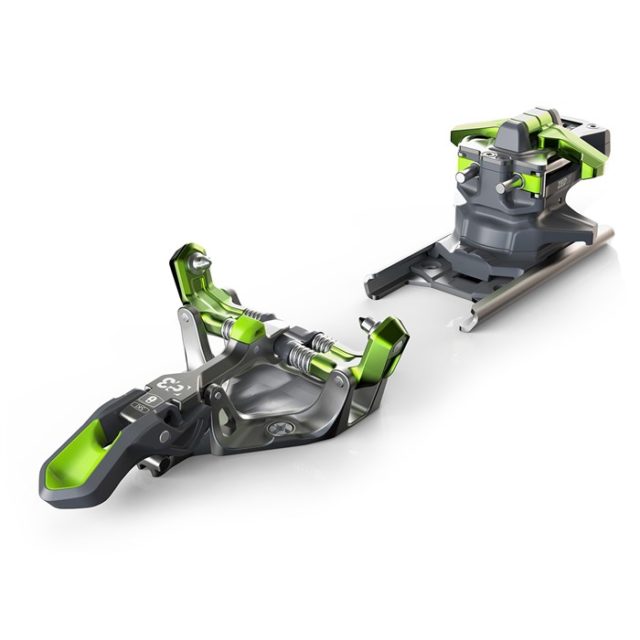
Intro
G3 has been quietly amassing a devoted following over the years. They have a reputation for making simple and durable backcountry gear that emphasizes functionality more than gram counting and flashy features. We’ve been fans of several of their skins and their ION 12 binding. And, personally, I love the SENDr 112.
So when we got word of a new binding from G3 that had a very similar feature set to the ION at reportedly half the weight, we were very intrigued. To get more info on the new ZED binding, we had a very interesting conversation with some of G3’s engineers, which you can check out here.
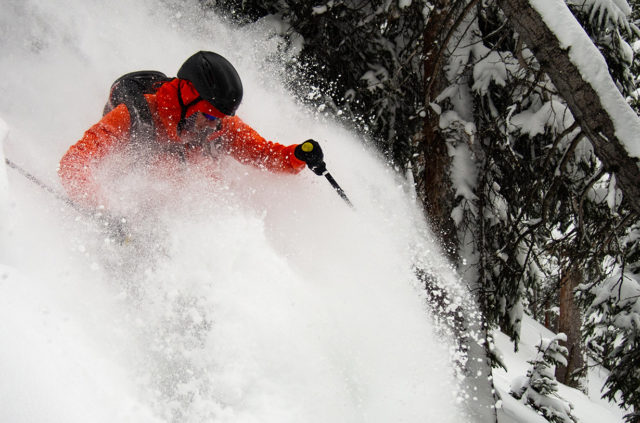
The ZED binding has certainly been getting a lot of hype since its announcement, and for good reason — on paper, it looks amazing. But when you actually get out and tour on it, how does the ZED compare to the other bindings in our Lightweight Touring Binding Shootout?
Design
The ZED shares a striking resemblance to the ION. Which, because the ION is quite good, is something we are very happy about. But the ZED has a few notable design features that set it apart from the ION and the other bindings in our Shootout, so let’s dive in.
Toe Piece
When talking about the design of the ZED, I’m going to be using the word “simple” a lot. And for a touring binding, we think that is a very good thing.
The ZED’s toe piece uses the same general design and geometry as the ION toe piece, with the primary difference being that the weight has been cut drastically (check out our podcast with G3’s binding designers for more on how they accomplished this). Metal has been shaved off throughout so that the toe sits closer to the ski and weighs much less than the ION toe (189 g for the ION toe vs 125 g for the ZED toe). The ZED’s toe bumper has also been made smaller and lighter.

Otherwise, the toe geometry (one of the big reasons we love the ION) and the general functionality on the ZED are the same as the ION. It’s a simple and easy-to-use design.
Functionally, the ZED toe is very easy to step into (easier than the Marker Alpinist, Dynafit TLT Speed, and Salomon / Atomic MTN / Backland Tour), and is one of the most confidence inspiring on the downhill. In theory, G3’s higher pivot point on the toe contributes to higher holding force in the toe pins, and the toe design also makes it easy to clear it of ice buildup.
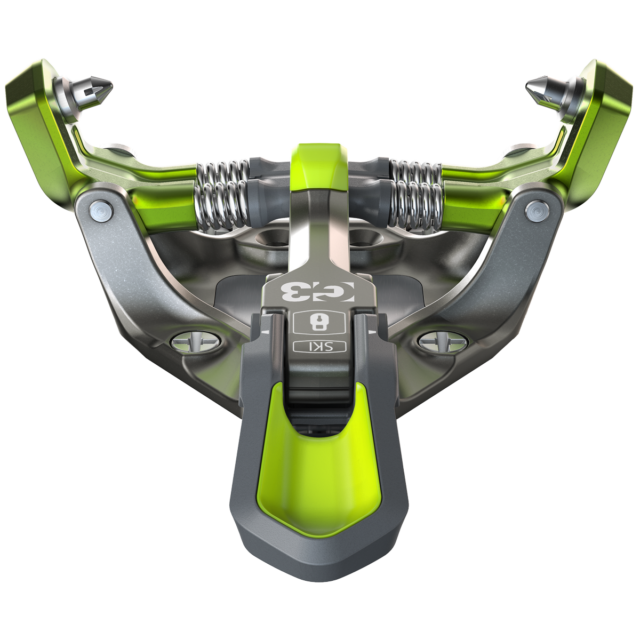
For those familiar with tech bindings, the ZED’s toe will offer no surprises. Ski / climb mode is still determined by a lever in front of the toe — pull up the lever to lock out the toe for climbing and push it down to allow release on the descent.
Heel Piece
Similar to the ION and ATK / Hagan Raider 2.0 12 / Core 12, the ZED doesn’t use a U-spring heel. Instead, the heel pins on the ZED are independent and rotate during step-in and release. This design is used to help limit wear on the heel inserts of your boots and provide a more consistent release in the event of a fall.
For more on the potential safety issues with U-spring bindings, check out our podcast with some of G3’s engineers where they discuss this topic around the 41:00 mark.
Unlike the ION, the ZED uses a single screw to adjust both the vertical and lateral release values of the heel (again, it’s simple). This, along with making the heel tower sit a bit closer to the ski, significantly cut the heel-piece weight between the ZED and ION (438 g for the ION with brakes and roughly 325 grams for the ZED with brakes).

Functionally, the ZED and ION heel pieces essentially operate identically. For climbing mode, you turn the heel tower 90 degrees in either direction to allow your ski boot to pivot while skinning. For the downhill, you turn the heel tower back to the forward position, allowing you to step into the heel pins and ski. This is a time-tested and easy-to-use design that’s used on many touring bindings. And unlike the other bindings in our test, the ZED’s heel piece is pretty easy to turn with your ski pole.
Another thing that I really love about the ZED is its heel risers. They are so simple and easy to use. I can easily actuate them with my pole basket and they offer the exact climbing heights I need (including a flat option). I think the risers on the ZED are a bit easier to use than both the MTN / Backland Tour and the Raider / Core (and those bindings’ risers are already quite good). The MTN / Backland Tour’s high riser is a bit higher overall and the Raider / Core has more options for fine-tuning, but for me, the ZED’s risers are just about perfect.
The ZED’s heel piece can be mounted with brakes (sold separately), or with a stomp pad to save weight and money. We haven’t yet gotten on a ZED mounted with brakes, but we will be soon, and will update this review once we’ve used the brakes.

Uphill Performance / Transitions
To avoid the risk of beating a dead horse, I’m going to use a different word than “simple” to describe the touring experience on the ZED … let’s go with “efficient.”
And again, those who are familiar with tech bindings will find no surprises here. The ZED works exactly like most other tech bindings.
It is the heaviest binding of those in our Lightweight Touring Binding Shootout, but the ZED still feels quite light on the uphill. And when we say the ZED is the heaviest, we’re only talking about a few dozen grams more than the other bindings in our test.
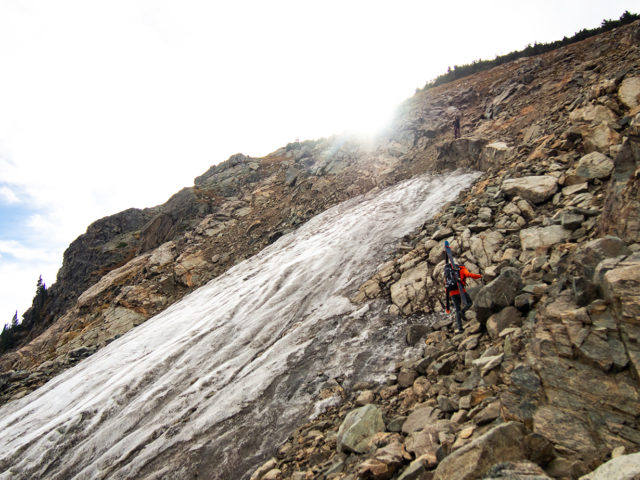
One of the nice things about the little bit of extra weight on the ZED is the way it affects the balance of the ski on kick turns. All of the other bindings in our Lightweight Touring Binding Shootout have heels that are so light that they require a touch more effort to kick turn — since there is less weight on the back of the ski, the tails don’t drop without a proper “kick” of the ski. The ZED is balanced noticeably better and, as a result, kick turns are a bit more intuitive as the ski’s tails tend to drop a bit easier.
Downhill Performance
We’ve made this caveat in all of the downhill performance sections for the bindings in this test. Two things really stood out to us while testing these bindings:
First, the downhill performance of each binding is surprisingly similar. If we weren’t skiing them back-to-back, I doubt we would be able to discern many differences in performance.
Second (and perhaps even more surprising), is how hard we were able to ski on these bindings without pre-releasing or breaking anything — including ourselves.
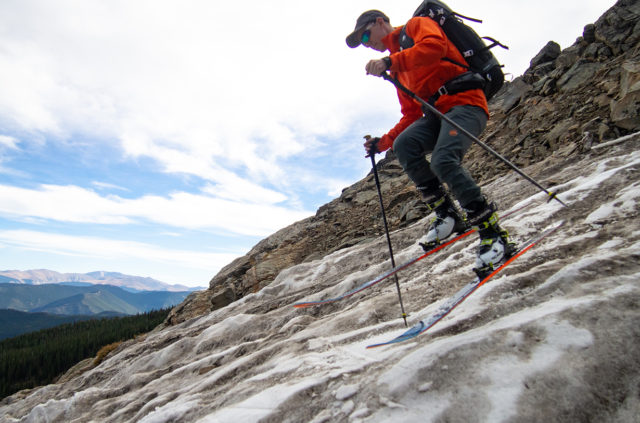
Much of our downhill-performance testing was done inbounds on firm or soft, chopped-up snow and at very high speeds. All of the bindings in the test performed surprisingly well (though the real standout in our Shootout was easily the ski — the Salomon MTN Explore 95 that we had all the bindings mounted on is just soooo good).
That being said, we were able to conclude a few things about the ZED’s downhill performance. It is worth noting that we tested the binding without brakes and with the included stomp pad installed.
Overall, the ZED feels quite competent on the downhill. I skied it hard on firm conditions (both groomers and bumps) and didn’t have any prerelease issues or other inconsistencies. The binding transfers power well but does retain much of the harsh ride qualities of traditional tech bindings. Both the Dynafit TLT Speed and Marker Alpinist offer a slightly less harsh ride.
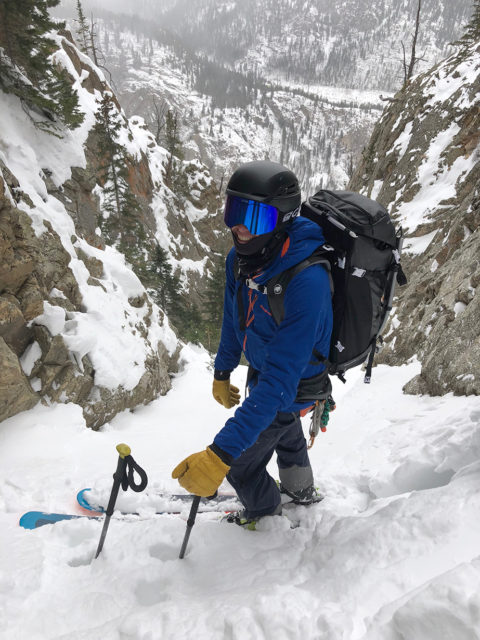
While it performs well on the downhill, the ZED doesn’t inspire quite as much confidence as the Raider / Core. When pushing hard on steep and firm groomers on the ZED, I would occasionally skitter out of a turn. While skiing equally hard on the Raider / Core on the same run, I did not have issues with the ski chattering out of a turn. The Raider / Core seems to transfer power a bit better the ZED, which I think could be the cause of this.
So when it comes to a solid and confidence-inspiring build quality, the Raider / Core still stands at the top of the bindings we tested — it just feels so solid. That’s not to say that I wouldn’t be very comfortable skiing the ZED hard in consequential terrain, it’s just that I would prefer to be skiing the Raider / Core, if given the option. Again, since all of the bindings feel so similar on the downhill, it’s slightly subjective aspects like the Raider / Core’s nearly all-metal construction that help it to stand out.

One of the more surprising ride qualities that we didn’t expect to crop up in our head-to-head binding test was a noticeable difference in the energy the ski transmitted when mounted with the different bindings. But the ZED definitely produces the liveliest ride of the bunch. The MTN Explore 95 seemed to have a bit more pop on the release of a turn mounted with the ZED compared to any of the other bindings in the test. If we hadn’t been testing these bindings back to back on the same ski, we probably wouldn’t have noticed this. It’s just a curious observation we noted during the test.
All in all, the ZED performs well on the downhill, given its low weight. It doesn’t have best-in-class power transfer and it has the fairly harsh feel that most lightweight pin bindings possess. But for backcountry skiing on a variety of snow conditions, we think most people would be happy with its downhill performance. In the class of lightweight tech bindings, the ZED skis quite well.
Safety / Release
Since the ZED and Raider / Core are the only bindings in our test that don’t use U-spring heel designs, I’m going to reiterate here what I wrote about the Raider / Core:
We have yet to experience a pre-release on the ZED or Raider / Core and, because of their non-U-spring heels and adjustable vertical and lateral release values, the ZED and Raider / Core have the most safety-oriented features of the bindings in our test. Without getting each binding on a testing rig and running side-by-side experiments, it’s difficult to say for certain which binding is objectively safer. But if I had to pick a binding that I would trust to hold in my boot when needed and to release when it should, the ZED and Raider / Core would be my top picks.
Durability
We haven’t had any preliminary durability issues with ZED after our initial testing, but we will be sure to update this section if any durability concerns crop up in our testing throughout the season. We will be using this binding a whole lot more, so stay tuned of updates.
Who’s It For?
The ZED is the most user-friendly and fully featured binding in our test. If safety-oriented features, simplicity, and ease of use are more important to you than counting every gram, the ZED is easy to recommend.
If you’re looking for the burliest and most solid-feeling binding of the group, the Raider / Core is the best option. And those looking for the least-harsh downhill ride are still going to prefer the Alpinist. But for many skiers who are looking for a lightweight touring binding, the ZED is an excellent option.
And if you’re wondering whether you should go with a lightweight binding like the ZED or a more downhill-oriented binding like the Salomon / Atomic SHIFT, check out our writeup in our Lightweight Touring Binding Shootout.
Bottom Line
The G3 ZED 12 is an impressively lightweight, fully featured touring binding. It is simple to use, has many safety-oriented features that other bindings in its weight class lack, and it performs quite well on the up and the down. Skiers considering a lightweight touring binding for long days on the skintrack should definitely take a look at the ZED.

Blister really needs to get into the weeds on safety and release expectations as part of this binding evaluation. All lightweight AT bindings are on a spectrum of safety, some less safe and others truly unsafe, and users need (and deserve) much more information to make an informed decision. To simply say “we did not have a prerelease” is a total cop out and blunted statement at informing skiers trying to make a expensive decision with big consequences. I don’t think anyone cares how well a binding skies downhill if it won’t release constantly and could end a season with a torn MCL. PLEASE step up and put some real energy into this section of the review!
Hi James, the safety / release characteristics of both alpine and touring bindings is a very complex and important topic. So what might seem to you like a “cop out” is actually us being very careful here to not say more than we can say and know. Because even with rigorous testing, determining the actual on-snow safety and release consistency of a binding is very difficult, for a whole slew of reasons, including new boot norms, rubber soles, worn soles, etc.
As a generalization, however, pin bindings are not going to release as consistently as alpine bindings, and no binding is perfectly safe (people injure themselves in alpine bindings all the time).
But we continue to look into ways to deliver more concrete and conclusive information regarding which (if any) bindings are objectively “safer” than others.
Till then (and as flimflam points out below), we will continue to provide real-world updates of our experiences using these products, and we will continue to try to avoid unsubstantiated claims, and to not say more than we know.
Jonathan, Thank you for the quick and thoughtful response. It is brilliantly clear to anyone that all pin tech bindings are a different category than alpine bindings and should not be regarded as such. What is not clear, and the place where Blister should step in to illuminate the situation, is the broad spectrum of safety characteristics of various bindings within a shootout like this. In the Blister podcast with Jeremy Cole, and with the G3 team Cam, Simon and Mike it is clear that there are some big discrepancies among the technology out there and what it means for AT binding safety. Many people have shown that documenting this is difficult, but few are sharing their results. I’m surprised that while acknowledging this gap in knowledge, the shootout, and subsequent binding reviews, don’t make an effort to provide any details or coverage beyond saying: ‘results may vary’, ‘it’s not an alpine binding’ or ‘we did not experience a pre-release’.
Blister is the benchmark review site in the ski space right now. I surface this issue because it is a notable gap in an otherwise fantastic and thoughtful series of illuminating reviews we rely on. Please continue to do the same high quality non-biased coverage you are doing… Just help us stay safe while you do it.
I would say Blister has done the right thing here.
What would you like them to do different? test the bindings with standard shop binding release protocols?
If you have read jeff Campbell’s research nad other information on the topic, you know that tech binding performance is subject to minuscule variations in dimensions of boot and binding. this means that one test is not very representative for other boots.
That is still discounting the scenarios for relate that are different than the shop test (eg flexed skis or forward/backward load in twist).
In short, any testing that Blister could do, would be so limited as far as general results, as to be useless, possibly even dangerous.
Tjaard – your comments here articulate very well our current position. Thanks. While we all would love to know — definitively — that binding X is safer than binding Y … there is a big gap between what we would like to know and what we are currently able to prove. There are so many variables at play that, as you say, we could caveat-to-death any results, or else run the extremely real risk of making overdetermined claims or sharing results that would then lead people to think they are making the best / safest decision, when that may or may not actually be true. So we have been and we will continue to think about and work on how best to address these issues, and how best to offer genuinely useful information that won’t give our audience a false confidence about the safety of the products we review.
James, fair enough, but one thing I’ve noticed about Blister is the fact they update their reviews the more time they get on a product. At this stage I don’t know how much more can be asked in terms of details about how well a first year product that has only been on the market a couple of months performs in actual use.
I think anyone looking at buying this product at this stage is taking a bit of a gamble no matter how you look at it. On paper and based on the Ion, these look awesome.
I agree that all new products are a gamble but this review points to another extremely high quality win from G3. I have no doubt that these will perform on snow as reviewed. I do however want to know however how this non TUV certified DIN/ISO binding stacks up to other non TUV certified DIN/ISO bindings in a competitive space for weight and downhill performance.
I just purchased some ZED bindings but haven’t mounted them yet as I have been reading a lot of online reviews complaining that when using the heel risers, the ZED moves slightly backward with each step due to the flex compensation spring being compressed. I’m concerned that this could cause some wear over many many ski days. Did you guys experience this issue when using it? Thanks!
I used the Zed for the first time over the weekend (4/28/19) and very obviously noticed the rearward movement of the heel piece. It was immediately clear on my very first step. Every step I took with either the high or low climbing riser engaged pushed the entire heel piece back a few millimetres and then it rebounded into the original position as I took my weight off of it for the next step. I dialed the release value all the way up from 8-12 and the heel piece movement seemed to decrease accordingly.
After hands on investigation and reading I think this is just a result of the design/function. It’s clear that the heel piece is meant to move sightly forward and backward in ski mode as the ski flexes. It’s also clear that the heel piece is meant to move sightly backward when the forces acting on it are at our beyond the release value, to allow the boot heel to rotate out. But this deliberate/designed rearward travel is very awkward in the uphill mode. It’s mushy. There appears to be no heel piece travel “lockout” in uphill mode.
Is this a known issue? Is it something G3 considers acceptable? Is it deliberate? I couldn’t find anything other than Kyle’s comment that related to this issue. Is anything else out there on it?
Hey Erik,
Next year G3 will be increasing the pre-load on the forward pressure spring by 55% with the intention of decreasing the reward movement of the heel piece in tour mode. The movement of the heel in tour mode shouldn’t pose any durability/performance concerns, but I certainly see how it might be annoying.
Best,
Sam
Got it. Thanks Sam.
Interesting and the first time I’ve heard of it. Will try it out tomorrow to see if I can notice this backwards motion. Hope there’s a way to update existing bindings as I already have 2 pairs!
Tried it out and can definitely see it and feel it move when on a steep uphill. Hope there’s an update for existing versions! 55% change in pre-load is a pretty major change.
I spent a bunch of time on the Zed last season, and found the heel tower movement to be a significant annoyance – though like Sam said, I don’t think it poses an issue from a performance or durability standpoint.
A friend at a shop was able to get me a pair of the new, stiffer forward pressure springs to retrofit to my pair, and with a few days on them now, the movement is reduced to the point where I can’t really feel it anymore. If I look back at the heel, I can see it moving a little, but it’s subtle enough to have done away with the mushy sensation I got out of the old springs.
It should be noted that heavier skiers (I weigh about 165lb) might have more issues, and the shape of the boot heel where it contacts the riser (as well as overall BSL) plays a role in how much force gets directed rearward into the spring. I’ve been using an Atomic Hawx Ultra XTD 130 in a 26.5 (the older WTR sole version).
I’d like to hear more in relation to Kyle’s question also. This review seemed overwhelmingly positive but with some possible gaps in terms of durability/longevity, but also what differs to ION other than weight.
Hello, Thanks for sharing this details, I liked it and I have shared it to my Facebook acount as well.
Best binding!
The Zed 12 does not work for me. It literally will not stay on my boots. I’ve tried it all kinds of snow conditions. I’ve taken it to several shops and they all say everything is set up correctly and that my boots are good. Several shops said they won’t sell the Zed 12 because the heel piece has too much play. The only way I can get them to stay on is to lock the toes in position 2 or 3. If I don’t lock the toes out, I easily come out of the binding simply by getting on my edges and bouncing a little. Even when the toes are locked out, I can come out of the binding. It’s simply too easy to rotate the heel piece. I’m assuming this issue has something to do with weight. I am 6’3″ and weight 205 lbs before gear/packs. After reading lots of blister reviews I have noticed many of the reviewers, including Sam at 140 lbs, are a lot lighter than me. I really don’t think this binding will work for heavier skiers. I tried contacting G3 about this but they did not respond.
You ever figure anything out? I’m 6’ 210 without gear and having the same issue
Hey guys, wondering whether anybody has noticed a need to bump up their dins with G3 bindings. I just started skiing the ZED and have had some issues pre-releasing at my typical “Dynafit” din. I also had a partner a couple years ago who had a similar issue with the IONs. Thanks!